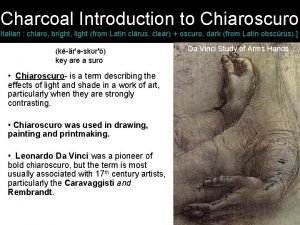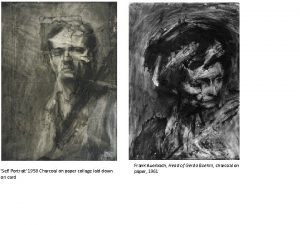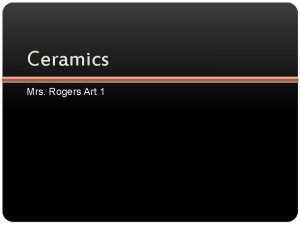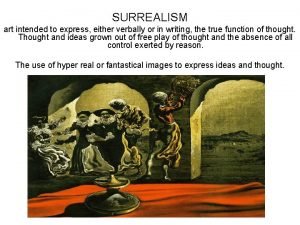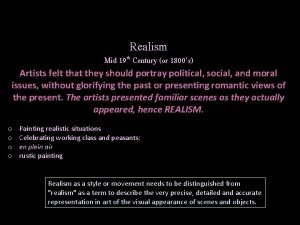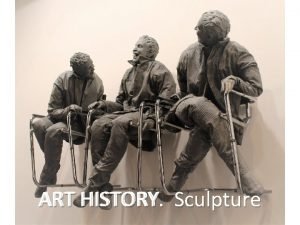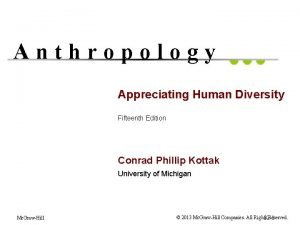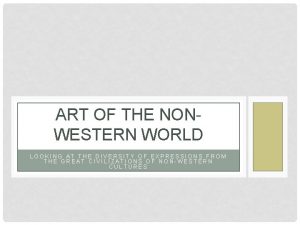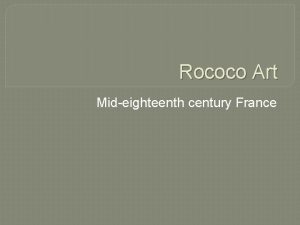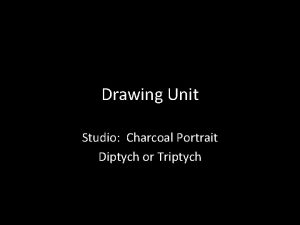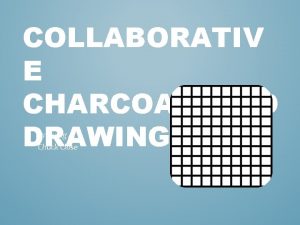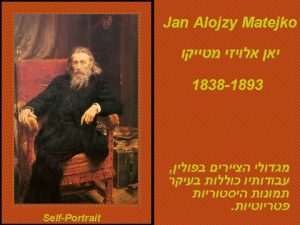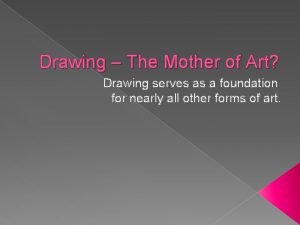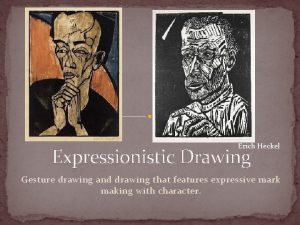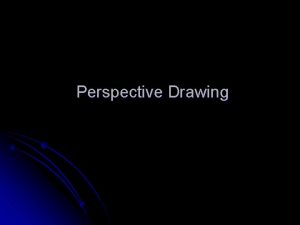Portrait of the Artists Mother 1514 Charcoal drawing










































- Slides: 42



Portrait of the Artist's Mother 1514 Charcoal drawing on paper

St Jerome in his Study 1514 Engraving


Triumphal Arch (detail)

Triumphal Arch (detail)

Emperor Maximilian I 1519 Oil on linden wood, Museum, Vienna

A Young Girl of Cologne and Durer's Wife 1520 Silverpoint Graphische Sammlung Albertina, Vienna


Madonna and Child on a Stone Bench 1520 Pen drawing, 135 x 87 mm Pushkin Museum, Moscow

הרונימוס St Jerome 1521

St Jerome (detail) 1521

Portrait of a Young Man 1521 British Museum, London


Triumphal Chariot (1/2) 1522 Woodcuts, mounted in pairs.

Triumphal Chariot (5/6) 1522 Woodcuts, mounted in pairs, 5/6: 412 x 565 mm

The Last Supper 1523 Woodcut, Vienna

The Four Holy Men 1526


Walrus 1521 British Museum, London


Lobster 1495 Pen drawing on paper Staatliche Museen, Berlin

Young Hare 1502 Watercolour and gouache Albertina, Vienna


Rhinoceros 1515 Pen drawing British Museum, London



Four Books on Measurement Dürer's work on geometry is called the Four Books on Measurement (Underweysung der Messung mit dem Zirckel und Richtscheyt). The first book focuses on linear geometry. Dürer's geometric constructions include helices, conchoids and epicycloids. He also draws on Apollonius, and Johannes Werner's 'Libellus super viginti duobus elementis conicis' of 1522. The second book moves onto two dimensional geometry, i. e. the construction of regular polygons. Here Dürer favours the methods of Ptolemy over Euclid. The third book applies these principles of geometry to architecture, engineering and typography. In architecture Dürer cites Vitruvius but elaborates his own classical designs and columns. In typography, Dürer depicts the geometric construction of the Latin alphabet, relying on Italian precedent. However, his construction of the Gothic alphabet is based upon an entirely different modular system. The fourth book completes the progression of the first and second by moving to three-dimensional forms and the construction of polyhedrons.

Construction of the Gothic alphabet is based upon an entirely different modular system.

Construction of the Gothic alphabet is based upon an entirely different modular system.

Geometric construction of the Latin alphabet, relying on Italian precedent.

Dürer discusses the Delian Problem and moves on to the 'construzione legittima', a method of depicting a cube in two dimensions through linear perspective. It was in Bologna that Dürer was taught (possibly by Luca Pacioli or Bramante) the principles of linear perspective, and evidently became familiar with the 'costruzione legittima' in a written description of these principles found only, at this time, in the unpublished treatise of Piero della Francesca. He was also familiar with the 'abbreviated construction' as described by Alberti and the geometrical construction of shadows, a technique of Leonardo da Vinci. Although Dürer made no innovations in these areas, he is notable as the first Northern European to treat matters of visual representation in a scientific way, and with understanding of Euclidean principles. In addition to these geometrical constructions, Dürer discusses in this last book of Underweysung der Messung an assortment of mechanisms for drawing in perspective from models, such as the camera lucida and provides woodcut illustrations of these methods that are often reproduced in discussions of perspective.

Principles of geometry to architecture

Principles of geometry to architecture

The principles of linear perspective

Four Books on Human Proportion Dürer's work on human proportions is called the Four Books on Human Proportion (Vier Bücher von Menschlicher Proportion) of 1528. The first book was mainly composed by 1512/13 and completed by 1523, showing five differently constructed types of both male and female figures, all parts of the body expressed in fractions of the total height. Dürer based these constructions on both Vitruvius and empirical observations of, "two to three hundred living persons, “ in his own words. The second book includes eight further types, broken down not into fractions but an Albertian system, which Dürer probably learned from Francesco di Giorgio's 'De harmonica mundi totius' of 1525. In the third book, Dürer gives principles by which the proportions of the figures can be modified, including the mathematical simulation of convex and concave mirrors; here Dürer also deals with human physiognomy. The fourth book is devoted to theory of movement.

Appended to the last book, however, is a self contained essay on aesthetics, which Dürer worked on between 1512 and 1528, and it is here that we learn of his theories concerning 'ideal beauty'. Dürer rejected Alberti's concept of an objective beauty, proposing a relativist notion of beauty based on variety. Nonetheless, Dürer still believed that truth was hidden within nature, and that there were rules which ordered beauty, even though he found it difficult to define the criteria for such a code. In 1512/13 his three criteria were function ('Nutz'), naïve approval ('Wohlgefallen') and the happy medium ('Mittelmass'). However, unlike Alberti and Leonardo, Dürer was most troubled by understanding not just the abstract notions of beauty but as to how an artist can create beautiful images. Between 1512 and the final draft in 1528, Dürer's belief developed from an understanding of human creativity as spontaneous or inspired to a concept of 'selective inward synthesis. In other words, that an artist builds on a wealth of visual experiences in order to imagine beautiful things. Dürer's belief in the abilities of a single artist over inspiration prompted him to assert that "one man may sketch something with his pen on half a sheet of paper in one day, or may cut it into a tiny piece of wood with his little iron, and it turns out to be better and more artistic than another's work at which its author labours with the utmost diligence for a whole year. ”

Studies on the Proportions of the Female Body 1528 Woodcut

Differently constructed types of male figures

: מקורות דירר אלברכט http: //he. wikipedia. http: //en. wikipedia. org/wiki/Albrecht_D%C 3%BCrer http: //www. wga. hu/index 1. html http: //www. all-art. org/durer 1 -1. html http: //www. kunstlinks. de/bildtafel/duerer/ דירר מלנכוליה http: //he. wikipedia. http: //en. wikipedia. org/wiki/Melencolia_I http: //hsci. ou. edu/galleries/16 th. Century/Durer/1535/ http: //www. octavo. com/editions/duruwm/index. html http: //en. wikipedia. org/wiki/Albrecht_D%C 3%BCrer#Theoretical_works http: //www. rarebookroom. org/Control/duruwm/index. html http: //www. albrecht-durer. org/ http: //www. abcgallery. com/D/durer. html : ספרות בגרמניה ספרות שנות מאות חמש – בויס עד מדירר . בקט ונדי , הציור של סיפורו . מעריב ספריית , הציור גדולי

 Charcoal value scale
Charcoal value scale Collage portrait artists
Collage portrait artists Portrait of the artist s mother
Portrait of the artist s mother A bicycle changes color as it rusts physical or chemical
A bicycle changes color as it rusts physical or chemical Chiaroscuro charcoal
Chiaroscuro charcoal Charcoal coolers in kenya
Charcoal coolers in kenya Charcoal in a fire turns to ash after several hours.
Charcoal in a fire turns to ash after several hours. Charcoal
Charcoal Frank auerbach charcoal
Frank auerbach charcoal Wood rotting physical or chemical change
Wood rotting physical or chemical change Decolorizing charcoal recrystallization
Decolorizing charcoal recrystallization What is adsorption in physical pharmacy
What is adsorption in physical pharmacy Phails charcoal
Phails charcoal Portrait zentangle
Portrait zentangle Line self portrait
Line self portrait Poem on mother teresa
Poem on mother teresa Chapter 8 mother to mother
Chapter 8 mother to mother How do artists inspire future generations
How do artists inspire future generations Both artists use a combination of simile and metaphor
Both artists use a combination of simile and metaphor A thriving trading region where the renaissance began
A thriving trading region where the renaissance began Pinch pot artists
Pinch pot artists Principles of design radial balance
Principles of design radial balance Artists plural possessive
Artists plural possessive Where did latin rock originated
Where did latin rock originated Famous optical art
Famous optical art The persistence of memory 1931
The persistence of memory 1931 Natural forms gcse
Natural forms gcse Famous artist statements
Famous artist statements Frank stella
Frank stella Realism artists 1800s
Realism artists 1800s Most famous hispanic artists
Most famous hispanic artists International association of astronomical artists
International association of astronomical artists Jelaine fauce.
Jelaine fauce. Famous artists
Famous artists Classical sculpture artists
Classical sculpture artists Olavi korolainen
Olavi korolainen Dystopian surrealism artists
Dystopian surrealism artists In nonindustrial societies, artists
In nonindustrial societies, artists Reflection artists gcse
Reflection artists gcse Monopolists may be artists
Monopolists may be artists Non western artists
Non western artists Famous rococo artists
Famous rococo artists Muslim innovations and adaptations answers
Muslim innovations and adaptations answers




